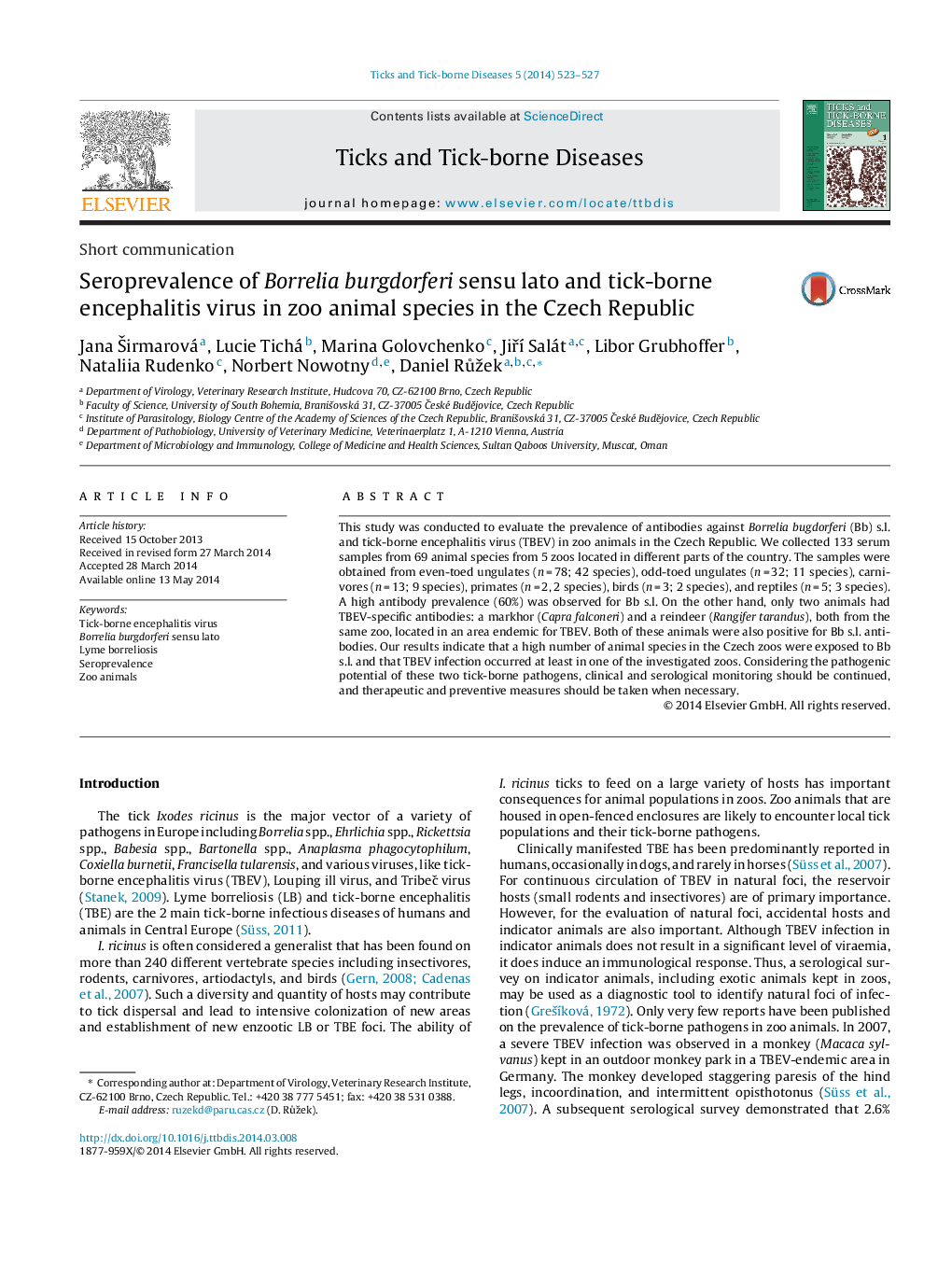| Article ID | Journal | Published Year | Pages | File Type |
|---|---|---|---|---|
| 2474049 | Ticks and Tick-borne Diseases | 2014 | 5 Pages |
This study was conducted to evaluate the prevalence of antibodies against Borrelia bugdorferi (Bb) s.l. and tick-borne encephalitis virus (TBEV) in zoo animals in the Czech Republic. We collected 133 serum samples from 69 animal species from 5 zoos located in different parts of the country. The samples were obtained from even-toed ungulates (n = 78; 42 species), odd-toed ungulates (n = 32; 11 species), carnivores (n = 13; 9 species), primates (n = 2, 2 species), birds (n = 3; 2 species), and reptiles (n = 5; 3 species). A high antibody prevalence (60%) was observed for Bb s.l. On the other hand, only two animals had TBEV-specific antibodies: a markhor (Capra falconeri) and a reindeer (Rangifer tarandus), both from the same zoo, located in an area endemic for TBEV. Both of these animals were also positive for Bb s.l. antibodies. Our results indicate that a high number of animal species in the Czech zoos were exposed to Bb s.l. and that TBEV infection occurred at least in one of the investigated zoos. Considering the pathogenic potential of these two tick-borne pathogens, clinical and serological monitoring should be continued, and therapeutic and preventive measures should be taken when necessary.
